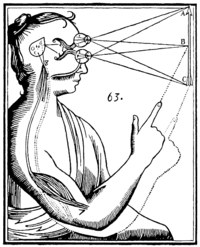
Photo from wikipedia
Machine learning methods provide powerful tools to map physical measurements to scientific categories. But are such methods suitable for discovering the ground truth about psychological categories? We use the science… Click to show full abstract
Machine learning methods provide powerful tools to map physical measurements to scientific categories. But are such methods suitable for discovering the ground truth about psychological categories? We use the science of emotion as a test case to explore this question. In studies of emotion, researchers use supervised classifiers, guided by emotion labels, to attempt to discover biomarkers in the brain or body for the corresponding emotion categories. This practice relies on the assumption that the labels refer to objective categories that can be discovered. Here, we critically examine this approach across three distinct datasets collected during emotional episodes—measuring the human brain, body, and subjective experience—and compare supervised classification solutions with those from unsupervised clustering in which no labels are assigned to the data. We conclude with a set of recommendations to guide researchers towards meaningful, data-driven discoveries in the science of emotion and beyond.
Journal Title: Scientific Reports
Year Published: 2020
Link to full text (if available)
Share on Social Media: Sign Up to like & get
recommendations!